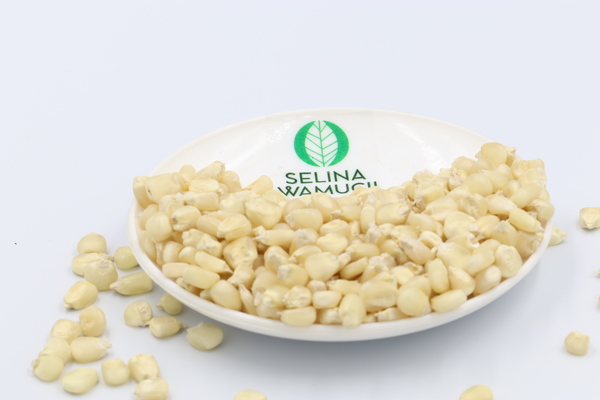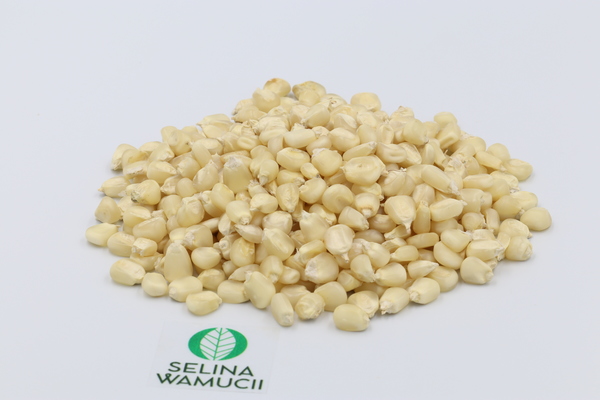Buy Ethiopia Maize Directly From Exporters & Suppliers - Best of 2024 Market Prices
Get Instant QuoteWe provide high-quality Ethiopia maize.
Ethiopia ranks fifth as one of the biggest maize producing countries in Africa. The widespread cultivation and consumption of the crop within its borders further highlights its importance. Maize is native to Mexico where it originated in the 15th century and later was adopted in other parts of the world inclusive of the African continent. In Ethiopia for instance, almost every family relies on it for survival particularly the low and middle-income earners residing both in the rural and urban areas.
Maize production has increased significantly in the last decade around the country. This increase has been attributed by the provision of improved cultivar hybrids of maize-they are an upgrade to the ordinary maize, to the smallholder farmers by agricultural institutions accredited by the government.
Annually smallholder farmers are estimated to contribute to 95% of the total national produce while 5% of it comes from the large commercial farms.
The demand for more raw materials by the beaming agro-industry sector continues to rise by the day.
The Ethiopia government on the other side has embarked on a national agricultural development strategy that seeks to enhance food security, and maize has been earmarked as a vital pillar of the program.
Plus the international market is waiting on the wings for its fair share of maize supply.
Last year alone the county produced an estimated 8.5 million tons with a majority of that produced said to have been consumed internally.
The country had 1,000,000 metric tons of surplus maize which was availed for export.
Maize production is expected to expand to balance its availability for local and external consumption.
Other than producing animal feeds, it is used as a raw material for the production of starch and extraction of oil.
Nutrient-wise it is rich in carbohydrate, protein, iron, vitamin B, and minerals hence it has several health benefits.
Mh140-Farmers adore its high resistance towards pests and diseases. It produces high yields, withstands prolonged drought and thrives in the central rift valley regions of Ethiopia.
Melkasa 1Q-Matures early and contains high protein content.
Melkassa2 and Melkassa4 are an ordinary type prevalent in the drought-prone areas
BH546 and BH547-Both varieties are characterized by the big size of the combs and are advocated to be grown in areas where other types of maize have done well before.
The main form of transporting maize is usually as grains.
South West/West regions, West/Northwest Amhara, Southern Nations Nationalities and Peoples Region (SNNPR), and Ben Shangul-Gumuz are there regions which produce the lion’s share of the national maize produce.
This is attributed to the moist and semi-moist mid-altitudes of the above zones.
They produce 75 % of the grain compared to the 25 % collected from the dry regions.
Double cropping, mono-cropping and intercropping are prevalent practices among growers.
The primary growing season is Meher when the May-September rains are experienced while belg that consists of the January-April short rains serves as the minor season.
Smallholder farmers’ still use traditional tools such as the hoe to cultivate their land. Those with more land to cover use the oxen plough.
Nonetheless, there is a section of the farmers who use modern tools such as the tractors to plough especially the ones owning large pieces of land.
The hoe is the most commonly used tool as it comes in handy in numerous stages of farming including the weeding stage.
Ethiopia maize takes 3-8 months to mature depending on the variety planted. Harvesting commences after the leaves and husks dry and turn yellow. The most common method used to harvest is the use of hands takes place manually using a sickle which is used to separate the base of the cobs from the stalk.
Farmers de-husk the cobs and place the maize on the threshing ground. Some farmers still thresh the maize by putting it inside jute box and beating the maize with a hard stick. However, many have adopted modern methods to hasten the process that include the use of manual or engine -driven threshers.
The process that follows after threshing is the proper and careful drying of grains in the tropical sun at a moisture level not exceeding 12.5%). Smallholder farms pack the grains in sacks or jute bags then store them in designated granaries or hats. Growers with substantial proceeds have warehouses for storage. The warehouses and barns are scrubbed well and fumigated before storage to enhance the safety of the grain and keep pests at bay.
Smallholder farmers who are the most significant sources of the Ethiopia maize continue to consign themselves to the farming of the white maize which is not a recipient of the Genetically Modified Organism. It has placed them in a good position on the international map for maize export considering that exporters in the past have only shown interest in the Ethiopia white maize.
Get Instant Quote
Are you a producer of Ethiopia Maize or other products?
Sign up today for FREE to buy or sell Ethiopia Maize.





